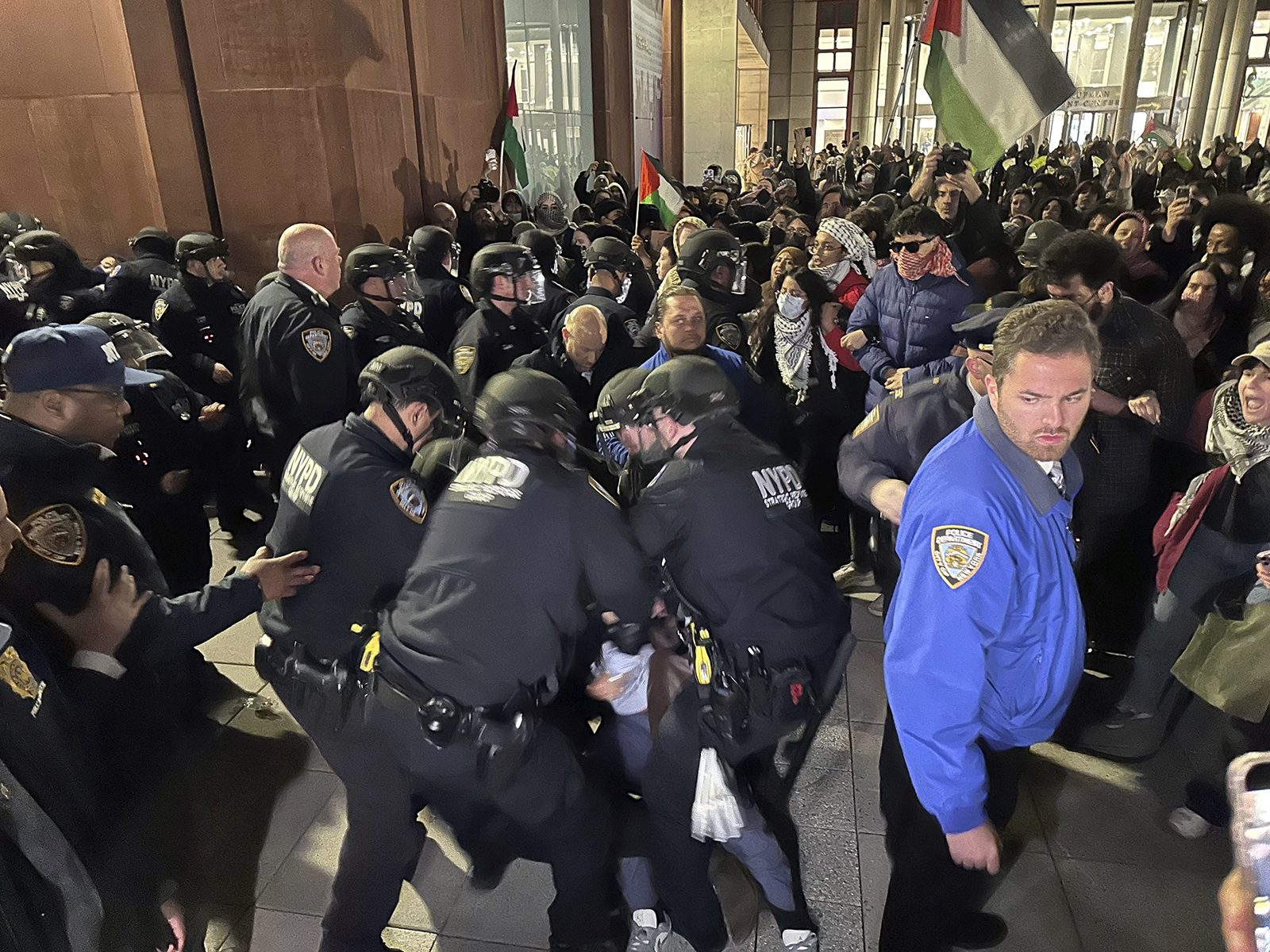(RNS) — On Thursday (May 2), police detained more than 2,000 protesters as they cleared the encampment at UCLA. Snipers were reported to be hovering over the encampments at Indiana University and Ohio State University in the weeks before. And social media has been full of violent attacks on university encampments from Zionist counterprotesters.
As the cost of their courageous resistance continues to rise, students should consider breaking camp soon, for the sake of their movement.
The uncomfortable truth is that breaking camp is inevitable. The semester will end soon, and the students who live in dorms will have to move out (and likely return to their hometowns). Encampments are behemoths to maintain, needing to keep people fed, sheltered, healthy and from imploding due to internal conflicts. Full divestment from Israel could take years, and few people — if any — can afford to encamp on a campus lawn until the demand is met.
Finally, no encampment will be able to withstand the full might of the militarized power of U.S. police. The violent backlash is already raising the cost of dissent. But most importantly it is threatening to overshadow the movement’s message. The point of the encampments is to pressure their schools to cut financial ties with Israel, not fight with police or counterprotesters.
It would be better for students to leave their encampments on their own terms, declaring victory for the many successes their encampments have already achieved, than to allow the police, counterprotesters or even President Biden to write the ending of their stories. At this point students have the opportunity to toast the fact that they’ve rallied their communities, disrupted business as usual, provoked a response from authorities — even, in some cases, successfully pressured some schools to the negotiating table.
If they pivot now, they can mock authorities for thinking that when they said, “We’re not stopping until you divest,” it meant they were interested in occupying an actual patch of grass. Sneak out in the cover of night and leave a bunch of mannequins in the camp holding protest signs. Let police look ridiculous as they crack down on a camp full of toys.

New York City Police Department officers arrest pro-Palestinian protesters outside a student-led encampment at New York University on Monday night, April 22, 2024, in New York. (AP Photo/Noreen Nasir)
Encampments can also hamper the agility movements need to achieve their goals. In their book “Why Civil Resistance Works: The Strategic Logic of Nonviolent Conflict,” scholars Erica Chenoweth and Maria J. Stephan explain that tactical diversity — changing methods of protest depending on circumstances — “makes outmaneuvering the opponent and increasing pressure points more plausible.” Tactical diversity helps movements endure because when one tactic loses its potency, the movement follows it up with something else.
Once the encampments face a certain level of opposition, too many mental resources are devoted to protecting the encampment, resources that could be better employed devising new tactics. If all the energy is expended maintaining the encampment, the movement is back to the drawing board when the tents fold.
Students would do well to look to the Occupy movement to see these principles in action. Occupy co-founder Micah White, who first tweeted under the Occupy Wall Street hashtag, writes:
Occupiers who believed that the Zuccotti encampment could last through the winter of 2011 were foolhardy. Not just because the winter in New York City is cold but because the winter is too long. As the community organizer Saul Alinsky explains in his 1971 book, Rules for Radicals, ‘A tactic that drags on too long becomes a drag.’
Encampments that have survived several attacks now are fighting a defensive battle, and the side in the defensive position rarely has the advantage. The protesters had the advantage when they launched the encampments because the “powers that be” weren’t expecting them. Since then they’re perfecting their strategies to discredit and dismantle them.
Students need to remember that the movement is about something bigger than holding a particular university building or campus green. It’s about Palestinian freedom. Conceding ground that can no longer be held to regain the advantage elsewhere is no failure.
Lastly, you only have to watch the news to see how vulnerable protesters are in encampments. Their opponents know exactly where to find them to attack them. They’re sitting ducks for snipers. Police in riot gear can run roughshod over their tents and barricades. Thugs who oppose the message can loot and pillage.
Movements waging struggle in other places under far more repressive regimes disperse their actors when congregating is too dangerous. As this movement evolves, students should do the same. Imagine a mass sick-out from students and faculty, or a mass boycott of key university funders with ties to Israel, a malicious compliance campaign with university policies across the nation. Acts of resistance that don’t require large groups to occupy one locale can offer more safety to participants and give the powers that be too many fires to put out at once.
To be sure, folding up the tents may feel like conceding defeat. But this isn’t a call to raise a white flag. It’s a call to think about what’s next. Students in encampments now have an opportunity to use the space they’ve seized and the communities gathered there to build disruptive capacity. Get people’s contact info. Strategize about what to do to keep the pressure on the system when the encampment ends. Because we can’t afford for this movement to depend on one tactic.
Discover more from CaveNews Times
Subscribe to get the latest posts sent to your email.


























![Exploring the Serene Beauty of Nature: A Reflection on [YouTube video title]](https://cavemangardens.art/storage/2024/04/114803-exploring-the-serene-beauty-of-nature-a-reflection-on-youtube-video-title-360x180.jpg)


























